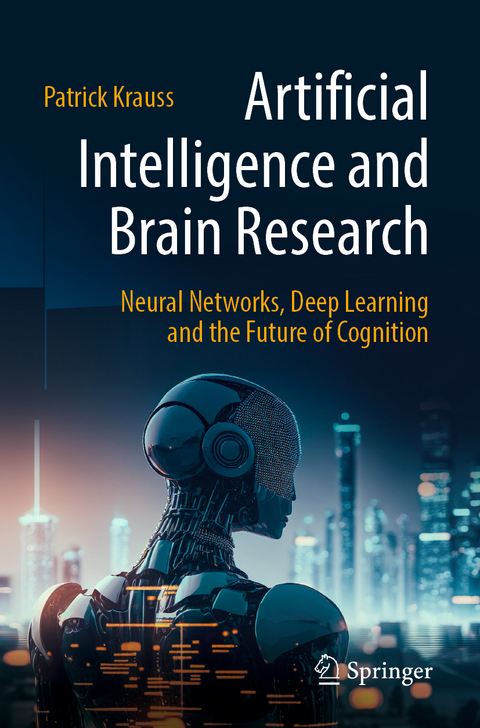
Artificial Intelligence and Brain Research
Springer Berlin (Verlag)
978-3-662-68979-0 (ISBN)
How does artificial intelligence (AI) work and are there parallels to the human brain? What do natural and artificial intelligence have in common, and what are the differences? Is the brain nothing more than a biological computer? What are neural networks and how can the term deep learning be explained simply?
Since the cognitive revolution in the middle of the last century, AI and brain research have been closely intertwined. There have been several spectacular breakthroughs in the field of AI in recent years, from alphaGo to DALL-E 2 and ChatGPT, which were completely unthinkable until recently. However, researchers are already working on the innovations of tomorrow, such as hybrid machine learning or neuro-symbolic AI. But what does this actually mean?
Based on current research findings and exciting practical examples, this non-fiction book provides an understandable introduction to the basics and challenges of these fascinating disciplines. You will learn what neuroscience and psychology know about how the brain works and how artificial intelligence works. You will also learn how AI has revolutionized our understanding of the brain and how findings from brain research are used in computer science to further develop AI algorithms. Discover the fascinating world of these two disciplines. Find out why artificial intelligence and brain research are two sides of the same coin and how they will shape our future.
Patrick Krauss studied medicine, computer science and physics. After completing his doctorate in neuroscience, he habilitated in linguistics on the subject of language processing in neural networks and the brain. He researches and teaches at the University of Erlangen-Nuremberg and the University Hospital Erlangen on topics at the interface of neuroscience, artificial intelligence and language. His scientific work includes over 80 publications.
Part I: Brain research.- The most complex system in the universe.- Building blocks of the nervous system.- Organization of the nervous system.- Organization of the cortex.- Imaging techniques: Watching the brain think.- Memory.- Language.- Cognitive maps and navigation in mental spaces.- Consciousness.- Part II: Artificial intelligence.- What is artificial intelligence.- How does artificial intelligence learn.- Playful artificial intelligence.- Recurrence: learning is not a one-way street.- Creativity: generative artificial intelligence.- Language-talented AI: ChatGPT and co.- How AI learns to learn.- What are AI developers researching today?.- Part III: Challenges.- What is a toaster? Dangerous stickers and other attacks.- Images in rain and sun: It's all about the data.- Hallucinating machines: Fact checks and world models.- Alchemy, reproducibility and black boxes.- A critical appraisal: What AI can't (yet) do.- Challenges of brain research.- What does it mean to understand a system?.- Part IV: Integration.- AI as a tool in brain research.- AI as a model for the brain.- Neuroscience 20: Using brain research to understand AI.- The brain as a template for AI.- Conscious machines?.- Outlook: Holodecks, uploads, brains in tanks and the singularity.
| Erscheinungsdatum | 17.07.2024 |
|---|---|
| Zusatzinfo | XII, 260 p. 32 illus. |
| Verlagsort | Berlin |
| Sprache | englisch |
| Maße | 155 x 235 mm |
| Themenwelt | Medizin / Pharmazie ► Studium |
| Naturwissenschaften ► Biologie ► Humanbiologie | |
| Schlagworte | algorithms • Artificial Intelligence (AI) • Autonomous Driving • awareness • black box problem • brain research • ChatGPT, alphaGo, DALL-E 2 • cognitive revolution • cognitive science • Computer Science • Deep learning • Language Processing • machine learning • Mind Brain Machine • Neural networks • Neurobiology • Neurosciences • Psychology • robot |
| ISBN-10 | 3-662-68979-0 / 3662689790 |
| ISBN-13 | 978-3-662-68979-0 / 9783662689790 |
| Zustand | Neuware |
| Haben Sie eine Frage zum Produkt? |
aus dem Bereich


